Speaker shelf ideas - experts say these are the best ways to play your music in style
Playing around with your speaker shelf ideas give you the best sound quality when listening to music, podcasts and more
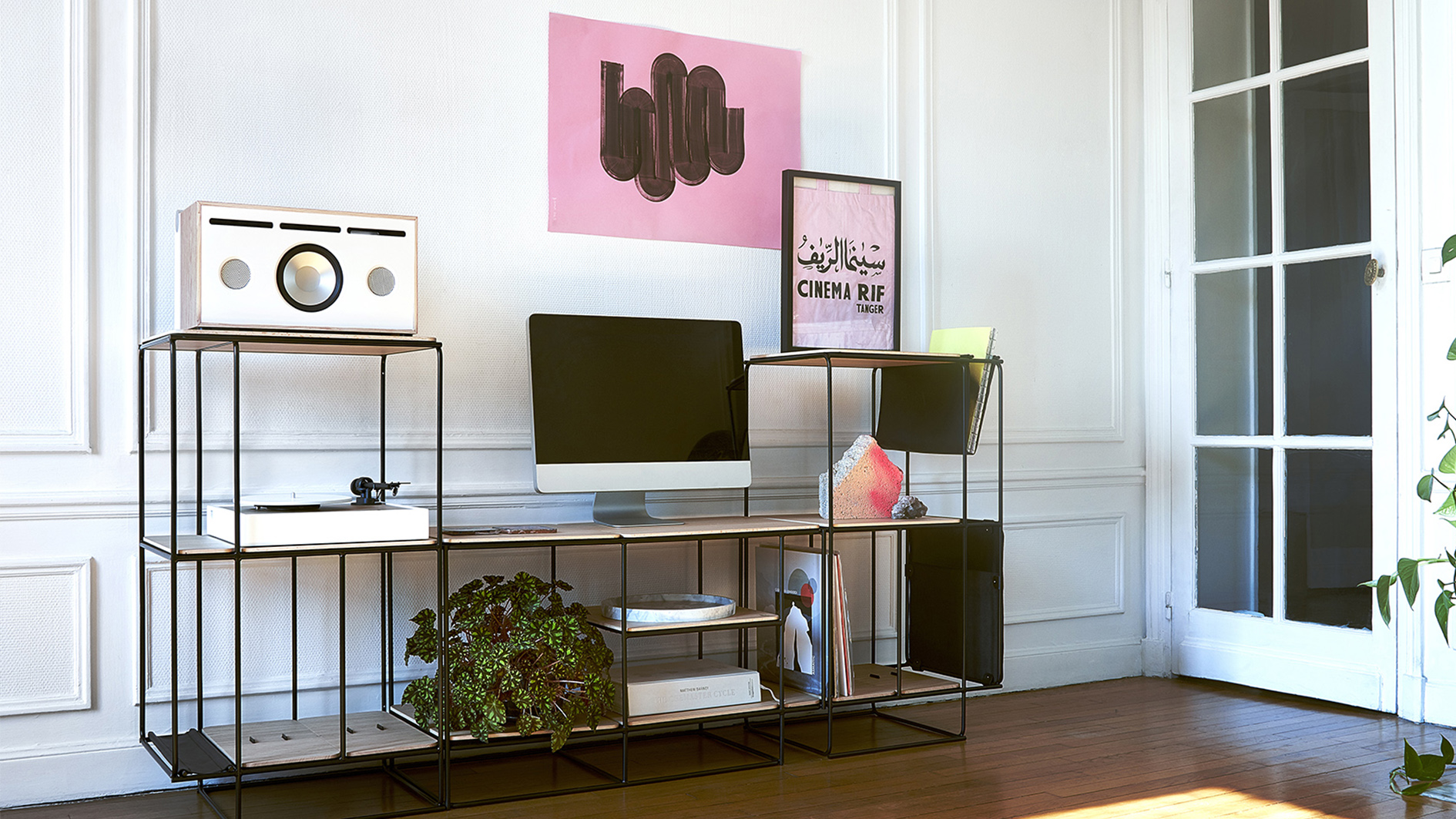
The best speaker shelf ideas will help your home tech blend in seamlessly with the rest of your meticulously crafted interior. But making those boxy speakers look a little less boxy can be a mission. Displaying speakers on shelves may sound like a straightforward process - get them out of the box and sit next to them next to your Hi-Fi. Job done, yep? But no. To get the best sound quality it's important to factor in your surroundings.
Then, if you've invested in one of the best Bluetooth speakers then chances are there's the other audio equipment such as a record player, soundbar, surround sound system, and TV all vying for storage space in your living room, too. Before you know it, you can start to feel as though you're tackling Round 23 of a kid's Tetris game trying to fit it all in.
But it's easy when you're armed with expert tips and ideas - displaying speakers we mean as sadly we can't help with Round 23 of Tetris. If stand mounting or hiding speakers in walls and ceilings isn't an option, choosing a solid speaker shelf can work well to enhance your listening experience, for example. Knowing the optimum positioning for the best audio quality is great intel too. So all that's left for you to do is ramp up the music and get dancing.
6 speaker shelf ideas and top tips for positioning your audio equipment
1. Choose an Ikea speaker that doubles as a bookshelf
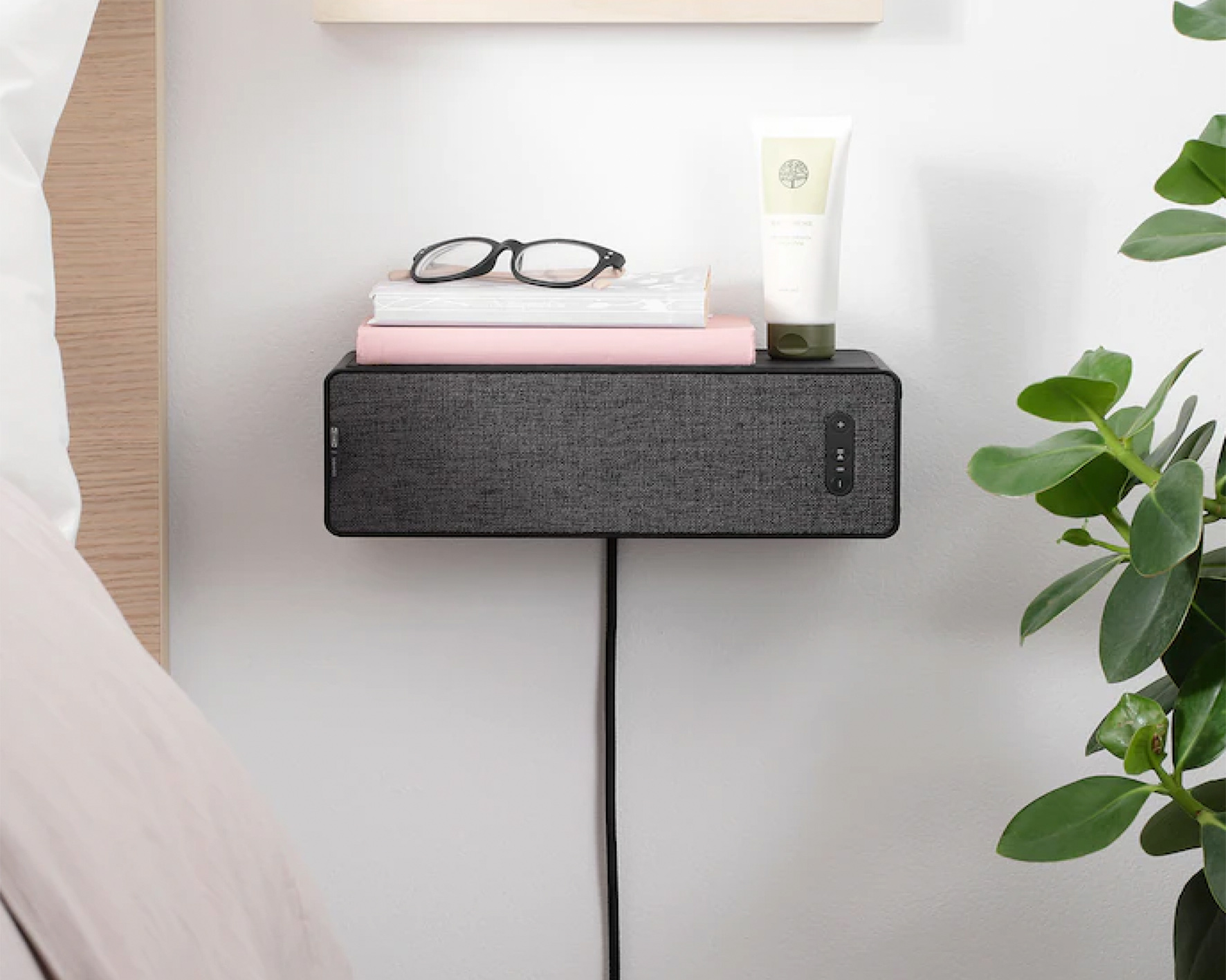
We're starting off with an idea that tackles two birds with one stone. Ikea's Symfonisk is both a Wi-Fi speaker and a bookshelf in one so you get the storage and great sound in one compact solution. You can position the speaker either horizontally or vertically to suit you and your space and enjoy the rich, detailed sound it provides - it might be compact but unless you're going for one of the best surround sound systems then it does the job you want. Meanwhile, you can use it to house your book, lamp, and other accessories.
2. Find a stand that is specifically built for audio equipment
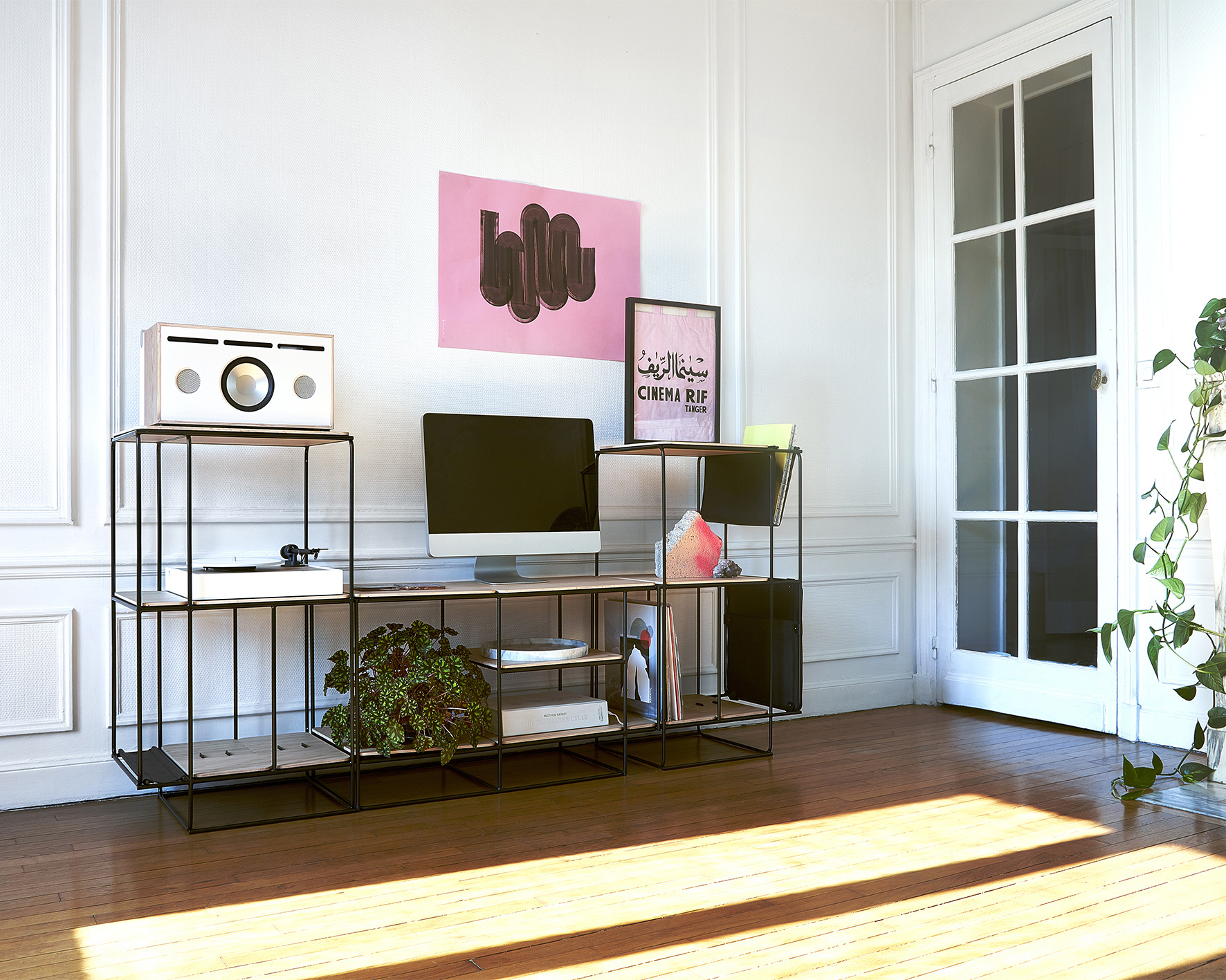
You can find a wide range of speaker shelves, media units and TV stands online that can help you display your audio equipment including record players, Hi-Fi systems, smart speakers, and more. Depending on your style, you can go for contemporary open-shelf solutions - as illustrated above in this modern LINES cabinet by La Boite Concept. Or, you can opt for something more traditional that hides part of your media equipment behind doors, similar to the sort of TV stand ideas we prefer. Whichever design you go for, however, you'll need something that is ideally equipped to house speakers on a solid platform and has enough space for the complementing audio equipment such as a HiFi or record player and wiring.
'The shape of our audio systems are designed to adapt to the user and complement any interior and the LINES cabinet is an expression of this ergonomic and all-in-one approach,' says Timothée Cagniard, CEO of high-fidelity speaker manufacturer La Boite Concept.
'Infinitely modular, it can accommodate all small audio systems without compromising on sound quality. The design allows for the absorption of parasitic vibrations often present when a loudspeaker and a turntable are together on the same surface, for example.'
3. Opt for a solid surface for your speakers
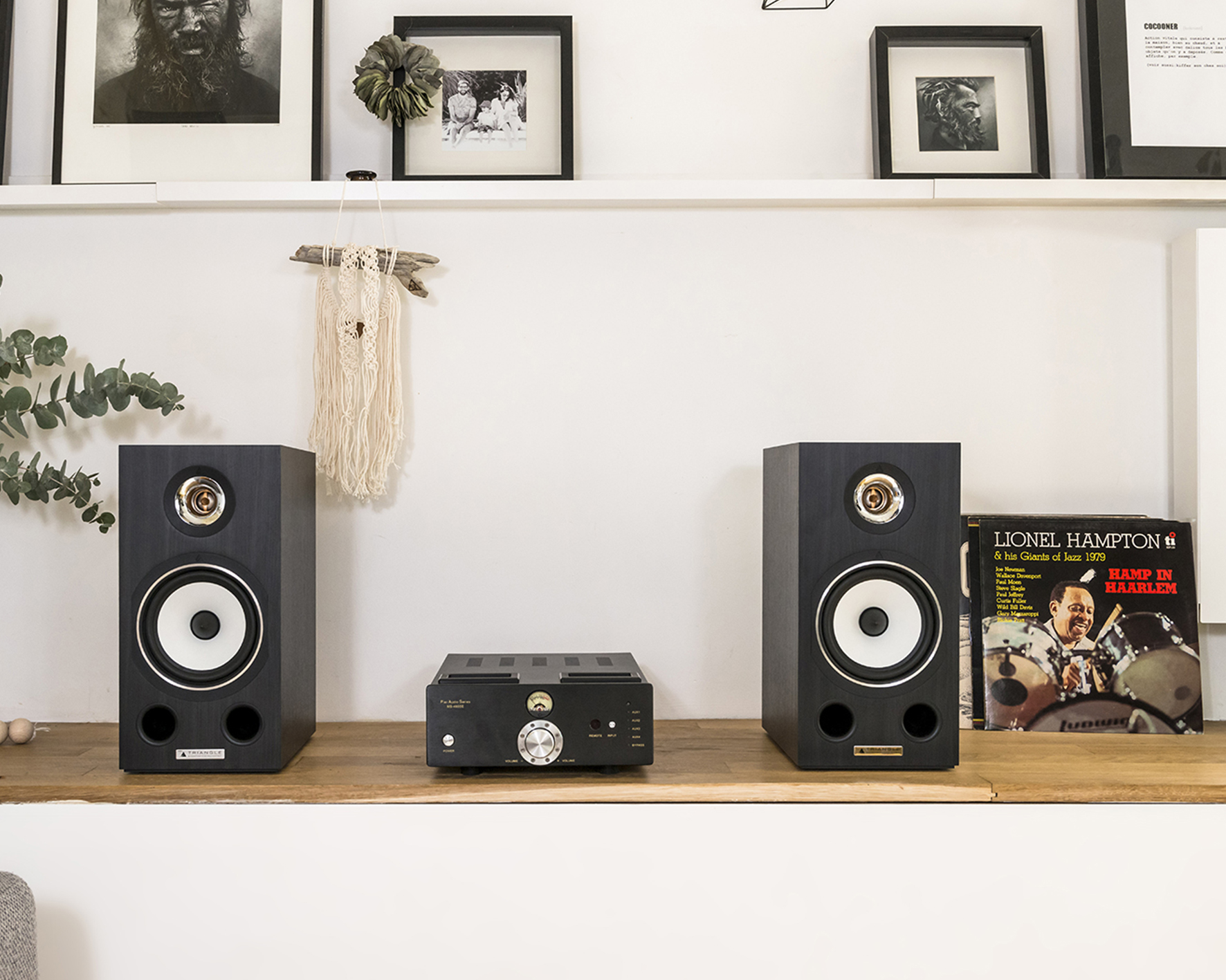
For radios, surround sound systems, and smart speakers, a solid shelf can work well. Funky Chunky Furniture, for example, sells a range of wooden shelves with wax finishes in a choice of lengths ranging from 30 to 160cm, which we particularly love (as pictured below).
'If you are positioning speakers on a shelf, mantlepiece, or alike, however, it's important to separate the speakers from the rear wall and side walls by up to 40cm,' says Jullien Thaler from high-end HiFi speaker manufacturer Triangle. 'Place the tweeter at ear level with the listening point for the best sound.' In this way, you can also incorporate them into your living room TV ideas to make sure the sound is distributed evenly.
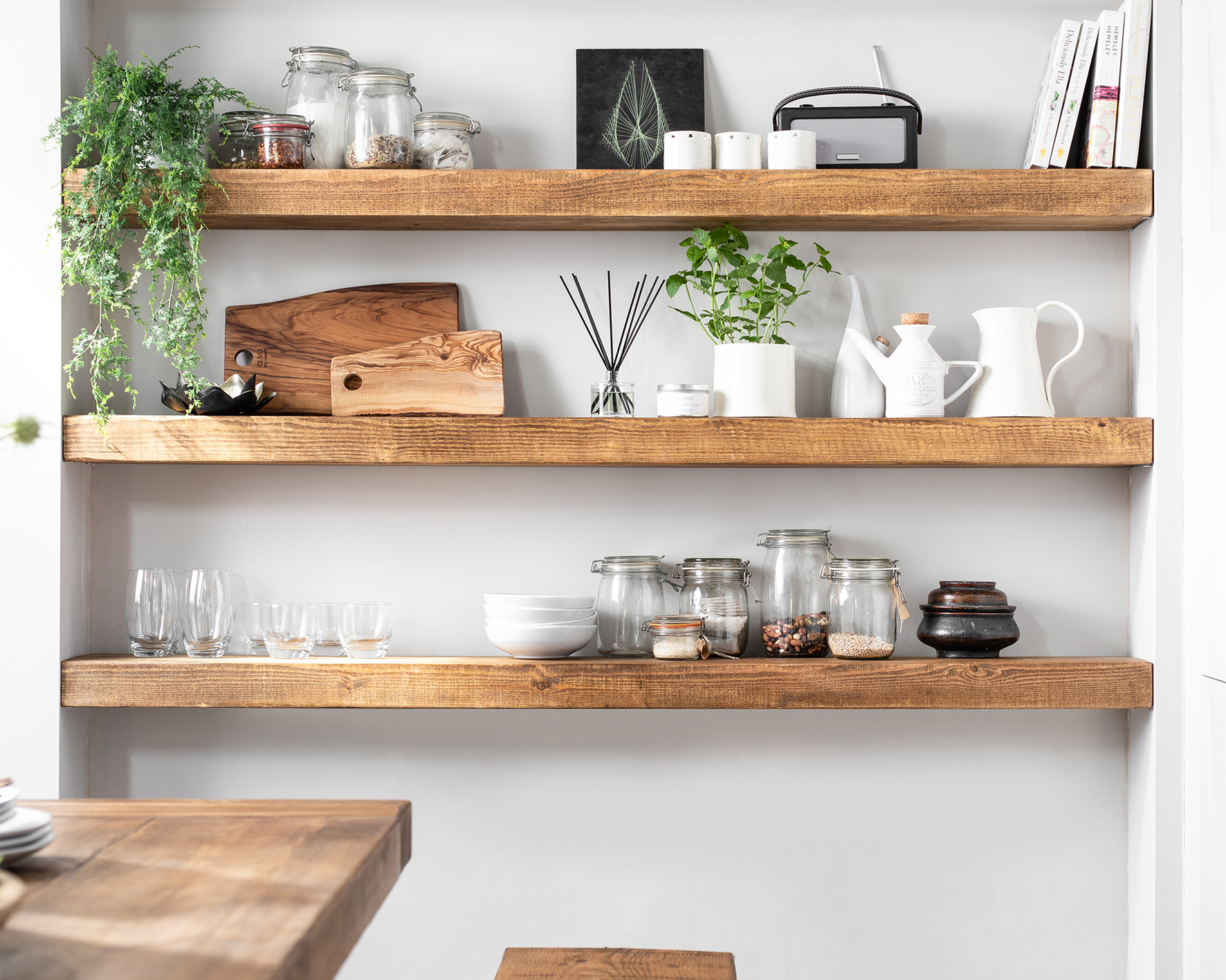
4. Create an equilateral triangle
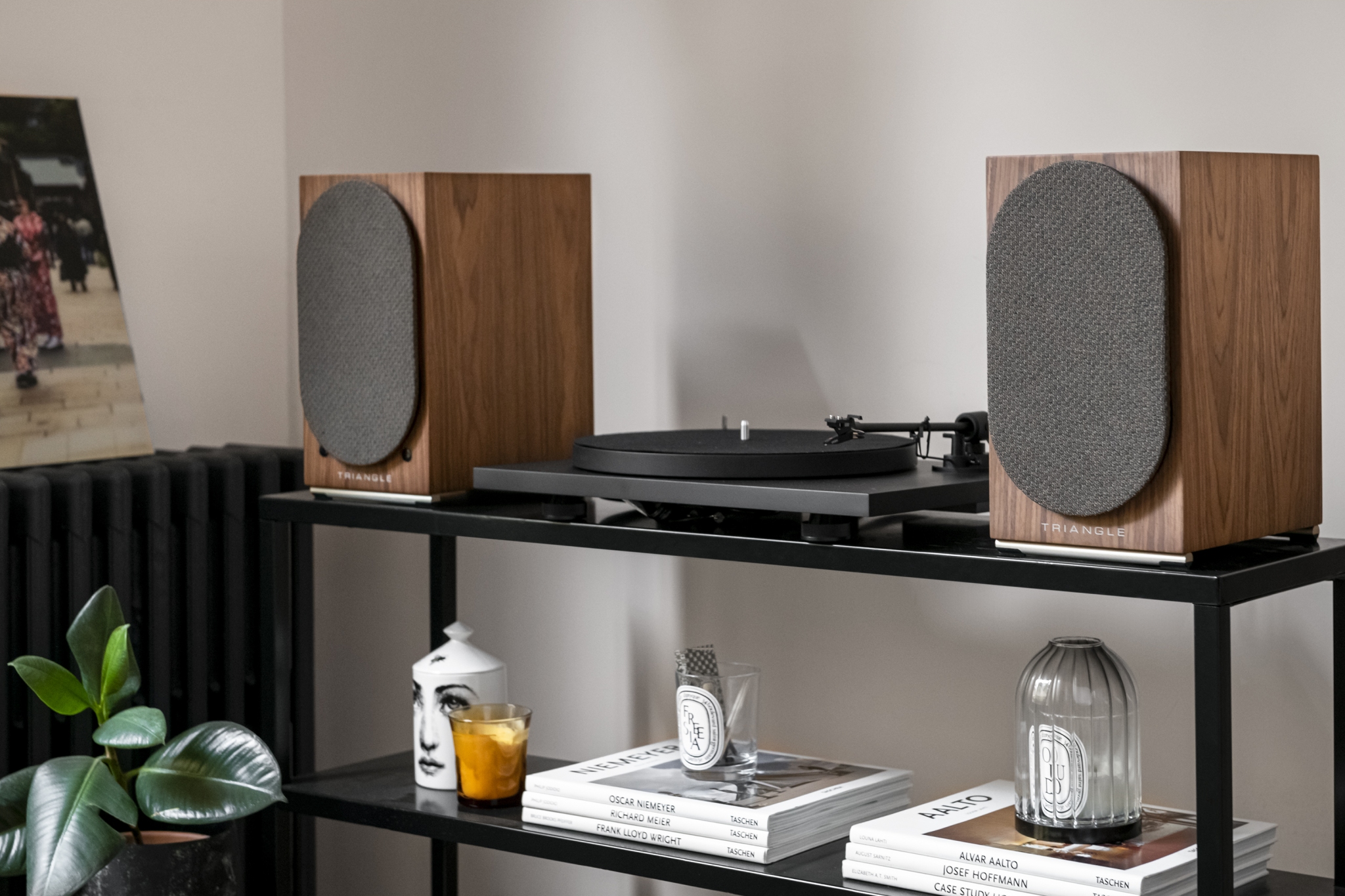
Location, location, location is everything when it comes to speaker positioning. Even though they're easy to move, getting the spot right is just as important as when wondering how to mount a soundbar on a wall.
‘Optimizing the placement of your speakers when placing them on shelves can make a big difference in the sound you are hearing,’ says Dave Morrison, founder of IsoAcoustics, a company that specializes in audio isolation equipment.
‘Keep in mind that speakers that are positioned too close together will sound flat and muddy. Space your left and right speakers further apart to provide a wider soundstage. This will give you a better imaginary three-dimensional space, so you can better hear the location of the instruments.
‘In an ideal setup, the left speaker, right speaker, and the listening position will form an equilateral triangle. An equilateral triangle has three equal sides, so the speakers and the listener would each be positioned at equal distances from each other. This is ideal, but it is often not possible depending on the shape of your room.’
5. Avoid corners
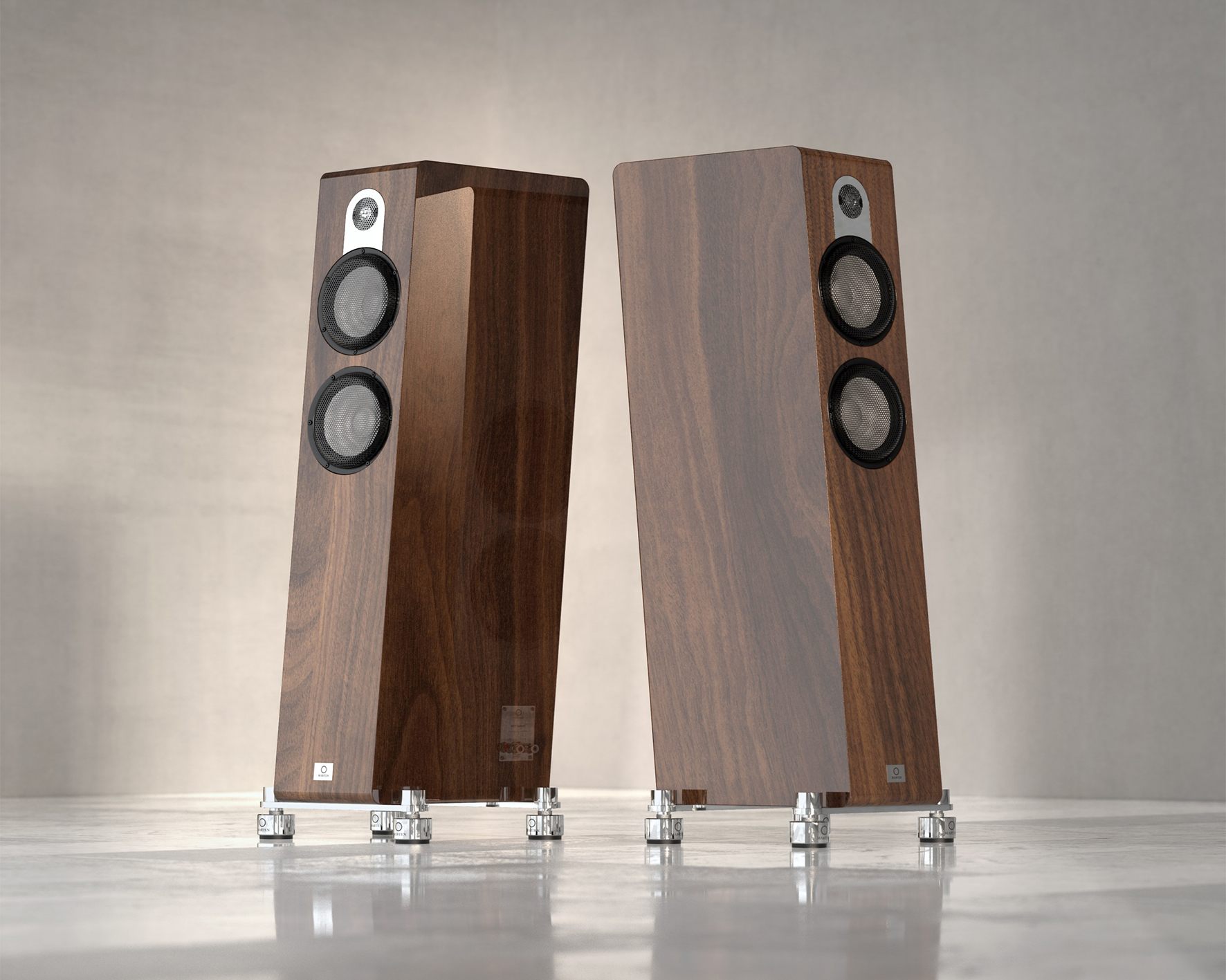
Dave Morrison also recommends that you avoid positioning your speakers close to the side walls - even if they are neatly out of the way. ‘Positioning speakers in the corner will result in a bass-heavy sound,' he says. 'The reflections of soundwaves on the left and right walls will also negatively affect the sound. For best results, we recommend positioning the speakers at least two feet away from the corner of the room to prevent reflections and bass buildup.’ Which does make us rather rethink all our living room ideas about shoving the speakers out the line of sight.
6. Focus your speakers
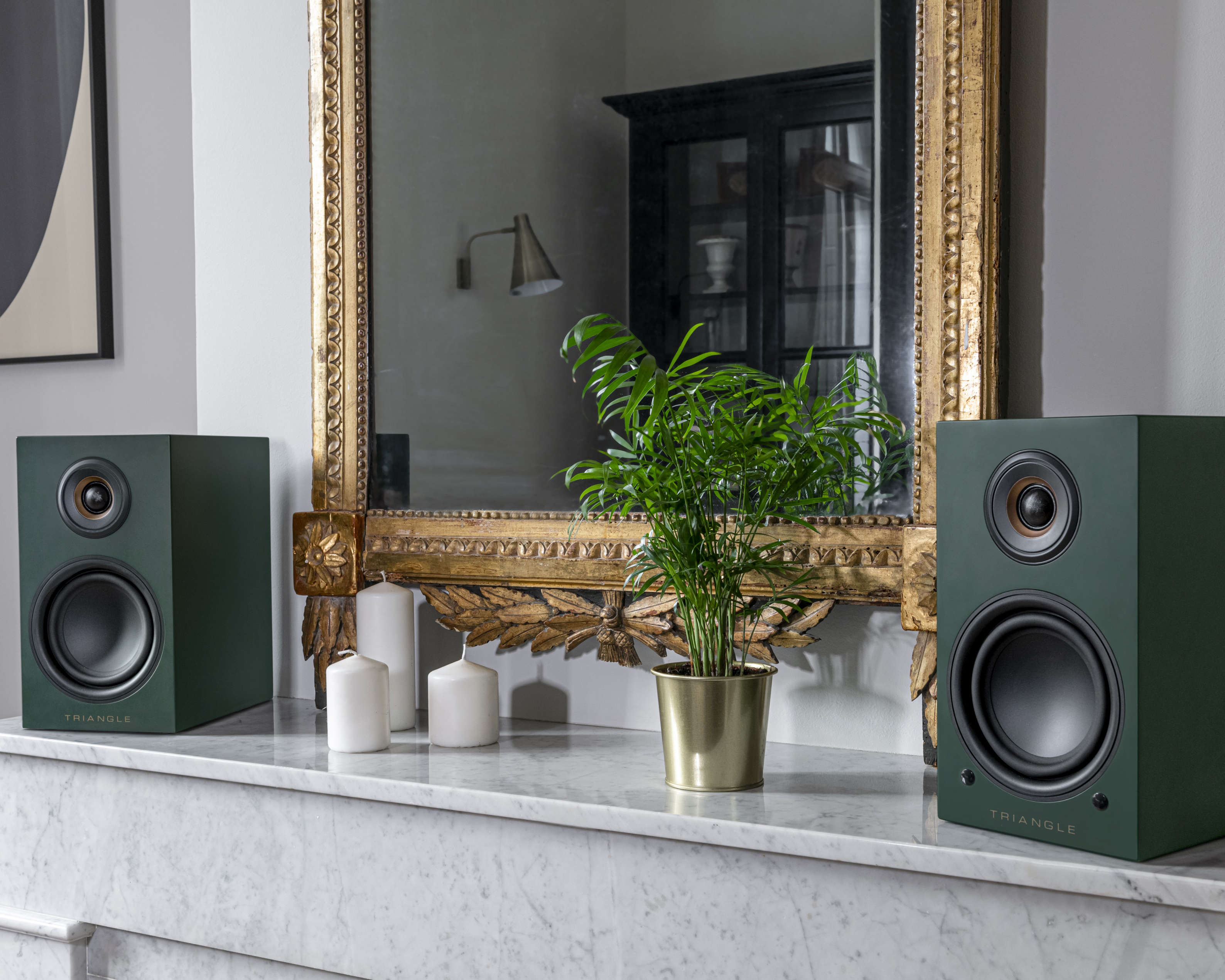
Just like with record player stands, you'll need to position your speakers at a slight angle too, to benefit from the best sound. 'Toe in your speakers so they are angled inwards and pointing towards the main listening area,' says Dave Morrison. 'Angle the speakers less if there are many listening positions in the room, so that you can open them up and more evenly fill the room with sound.'
With tweeters that are level with your ears, you'll enjoy the benefits more too. 'This is because high frequencies are more directional. If your speakers are not at the correct height, we suggest using a stand with tilt adjustment to allow you to optimize the focus of your speakers. The IsoAcoustics Aperta Series is a great solution for this application.'
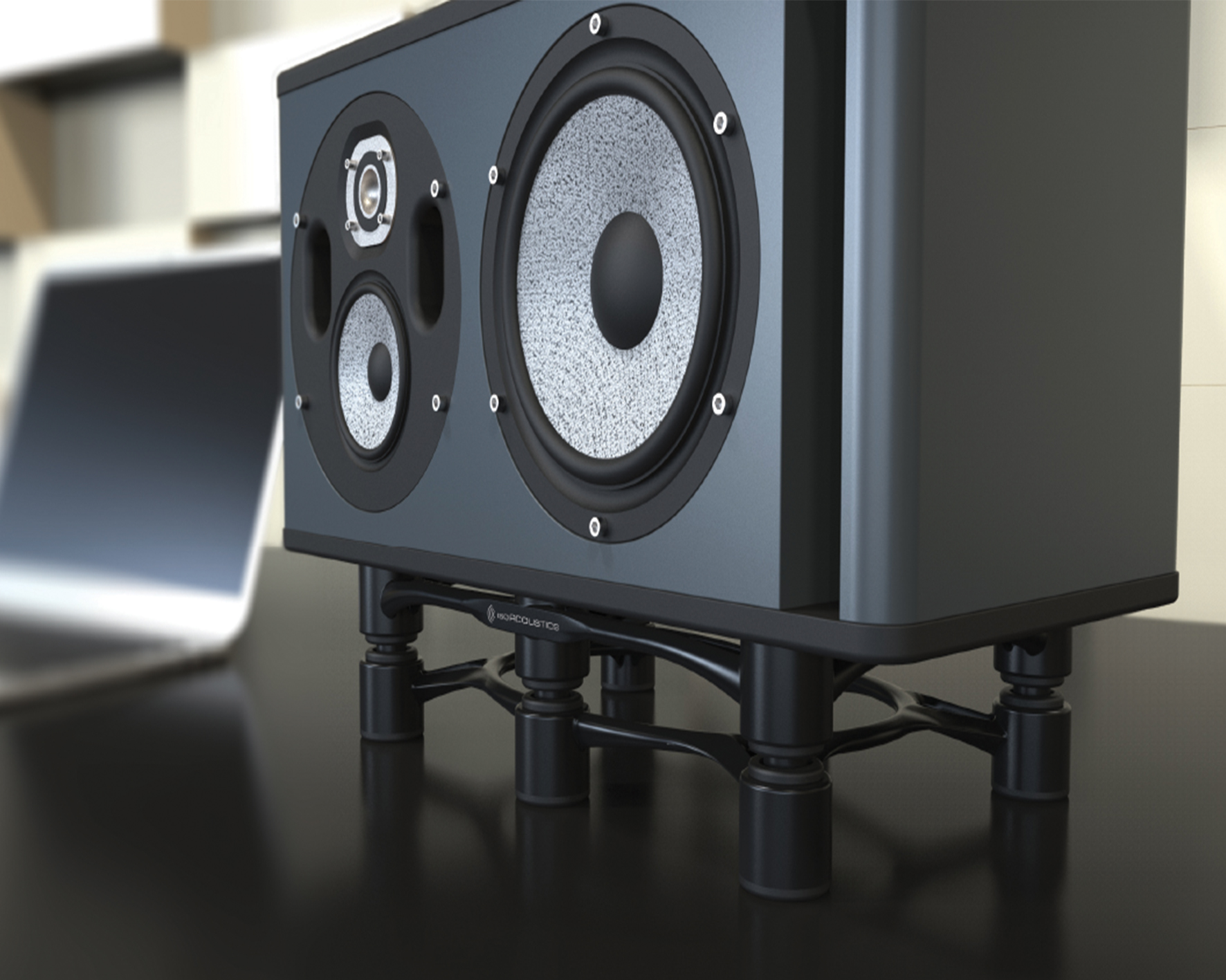
How can I isolate my speakers on a shelf?
Many audio experts will recommend isolating your speakers away from the supporting shelf - just as they do with the best record players. This prevents the speakers from causing dissonant sounds and is easier on the ears.
'The structure borne noise can also create anomalies in the listening area, disturb your neighbors and cause your turntable to skip, for example,' says Dave Morrison, founder of IsoAcoustics. 'Properly isolating your speakers from the shelf can make a noticeable difference to eliminate problems associated with speaker placement and improve the performance of your speakers.'
Try the Aperta Series from IsoAcoustics.
What wall bracket should I buy for my speaker?
If you want to mount your speaker directly onto the wall, you can find a wide range of brackets online at Amazon and alike to suit. 'There are too many speakers on the market for there to be custom brackets made for all of them,' says Mike Rampura from Smart Life AV. 'Some products like Sonos speakers have third party wall-mounting brackets and floor stands you can buy. Most other brands of surface mount speakers have hooks at the back to sit on normal screws or come with mounting brackets.'
Be The First To Know
The Livingetc newsletters are your inside source for what’s shaping interiors now - and what’s next. Discover trend forecasts, smart style ideas, and curated shopping inspiration that brings design to life. Subscribe today and stay ahead of the curve.
One of the UK's most respected tech and smart homes writers, Emily Peck also covers everything from interiors style to decorating trends. She is a contributor to Wired UK, and has also had a column in House Beautiful. She has written for publications such as Grand Designs, Stylist, Shortlist, Woman&Home, BBC, Ideal Home and House & Garden. She was once the Features Editor of Ideal Home.
-
 Straight from Salone: Five Emerging Trends I Found That'll Shape Interiors For the Year Ahead
Straight from Salone: Five Emerging Trends I Found That'll Shape Interiors For the Year AheadFrom reflective silver to fluidity, here's my perspective on the key themes and new moods coming through from Milan Design Week
By Sarah Spiteri Published
-
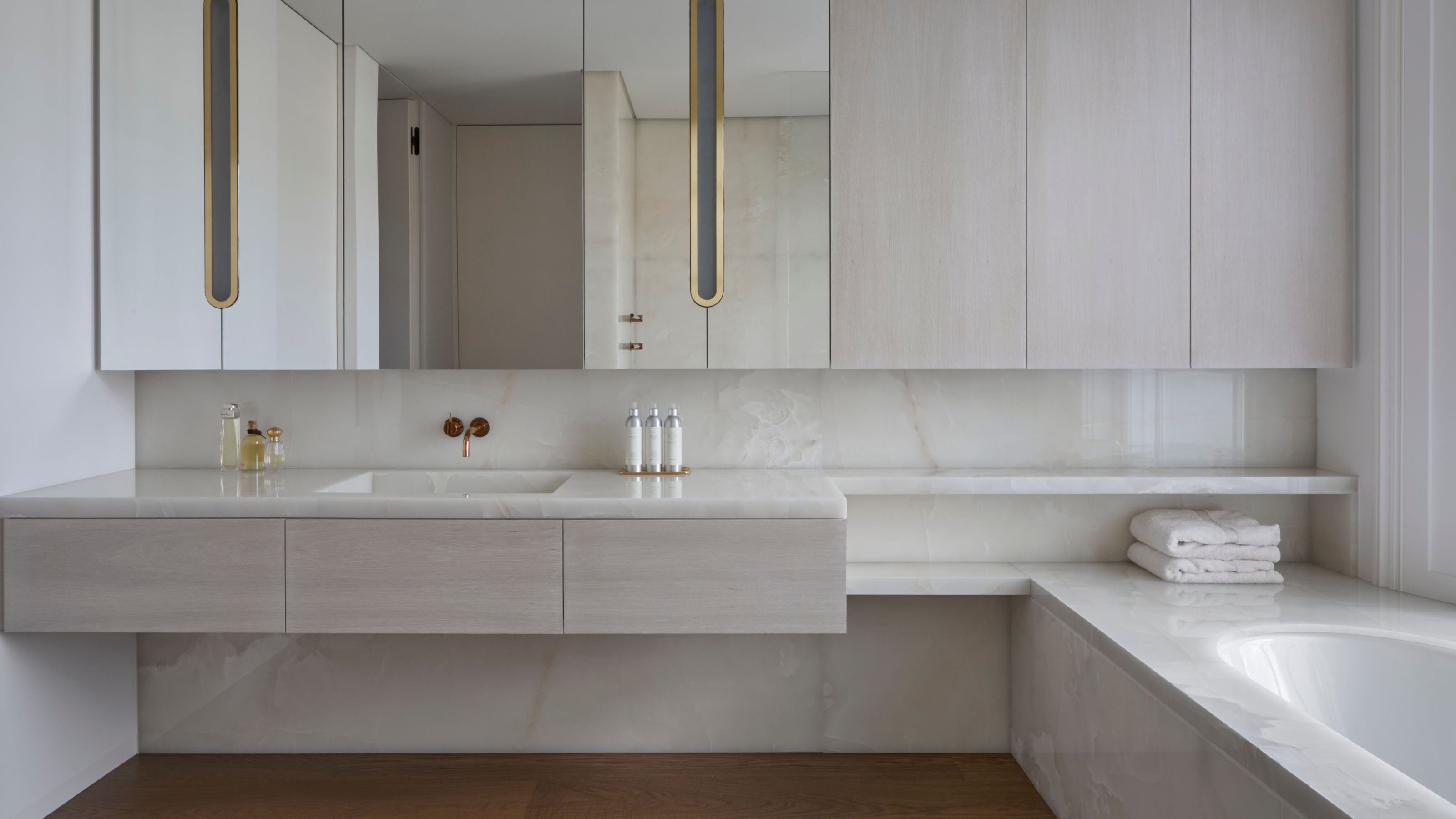 9 Bathroom Storage Mistakes You're Probably Making That Make Using This Space Much Harder — And What to Do Instead
9 Bathroom Storage Mistakes You're Probably Making That Make Using This Space Much Harder — And What to Do InsteadDiscover which mistakes are to blame for your overcrowded and cluttered bathroom
By Seraphina Kyprios Published